May Day celebrations date back to our pagan heritage and mark the new cycle of growth and fertility in nature across the UK. In Gaelic, it's known as 'Beltane', which was when the summer pastures open for livestock. In Wales, the 1st May is known as 'Calan Mai' or 'Calan Haf', and the traditions of decorating your doors and windows with blossom (often hawthorn), and building bonfires on the last day of April to bless the animals and their herders, has never died out.
Why not connect with our ancient beliefs this year? Whether you're thinking of joining the fire displays and goblin costumes of the Beltane Fire Festival in Scotland, enjoying the floral displays at Helston Flora Day or dabbing your nose with green paint and cheering on the Jack In The Green festival in Hastings, here are the best May Day celebrations to join in with this year. And a little history of May Day to explain it all.
When is May Day?
May Day is traditionally a public holiday in the UK celebrated on or around 1st May. In 2023 the May Day bank holiday will take place on Monday 1st May.
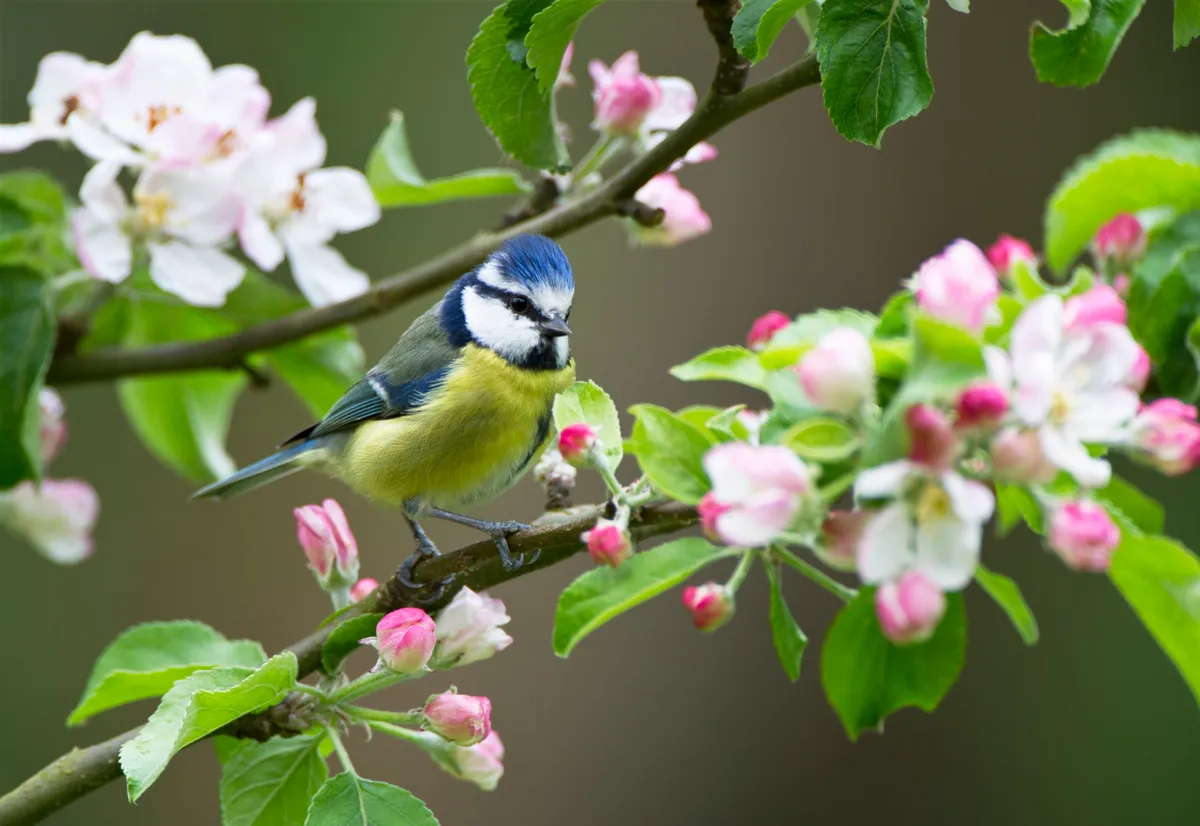
History and traditions of May Day
In Britain and Ireland, Celtic people celebrated the festival of Beltane on the first of May to mark the halfway point between spring and summer. In contrast, the festival of Samhain (now celebrated as Halloween on 31 October) fell halfway between autumn and winter, on 1 November.
Beltane is one of the few pagan festivals that survived the take-over of Christianity in Britain. Many of our old customs that celebrate new life and fertility are still out there today, including Morris dancing, Jack-in-the-Green parades and dancing around the maypole.
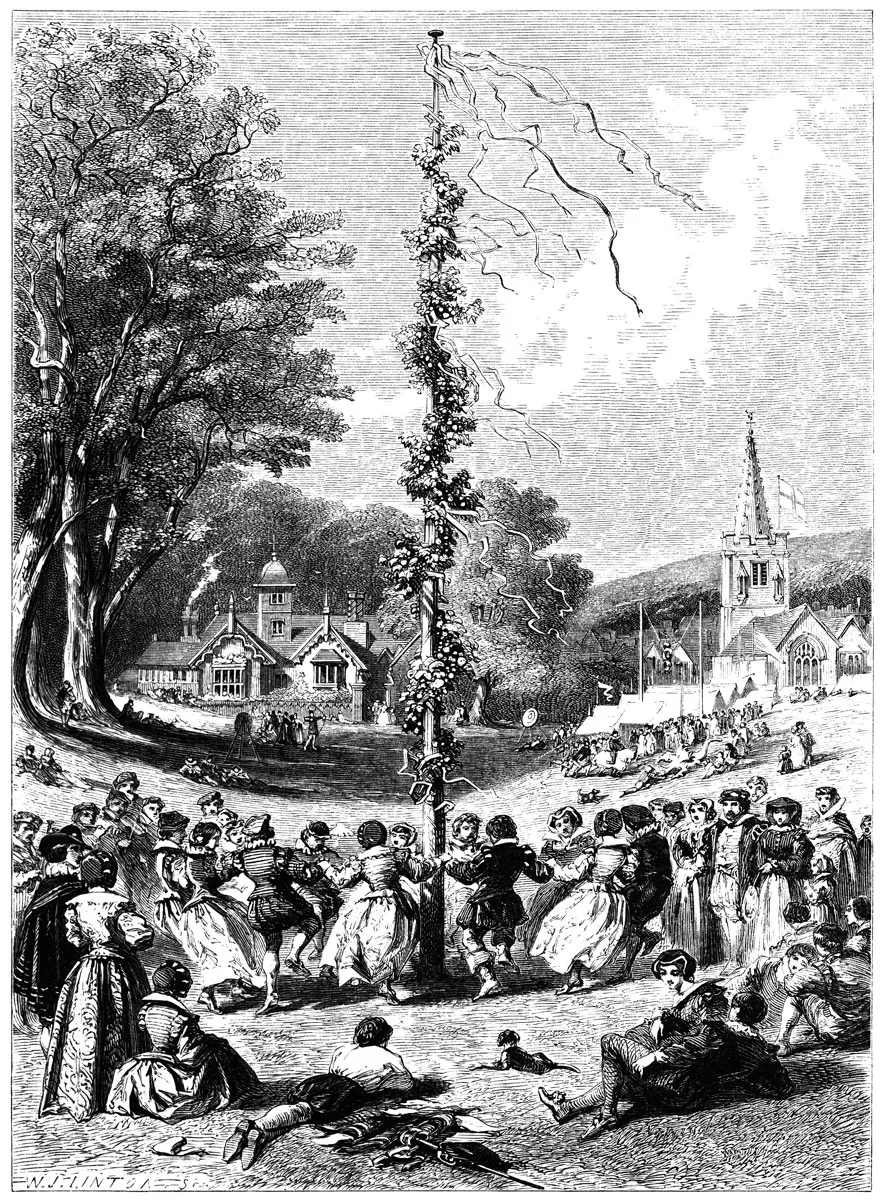
The earliest maypoles were probably young trees chopped down and erected on the village green with ribbons pinned to the top for local children to dance around. Today rehearsals often take place weeks in advance to ensure that the ribbons form artful plaits around the maypole instead of a tangled web of knots.
Morris Dancing traditions
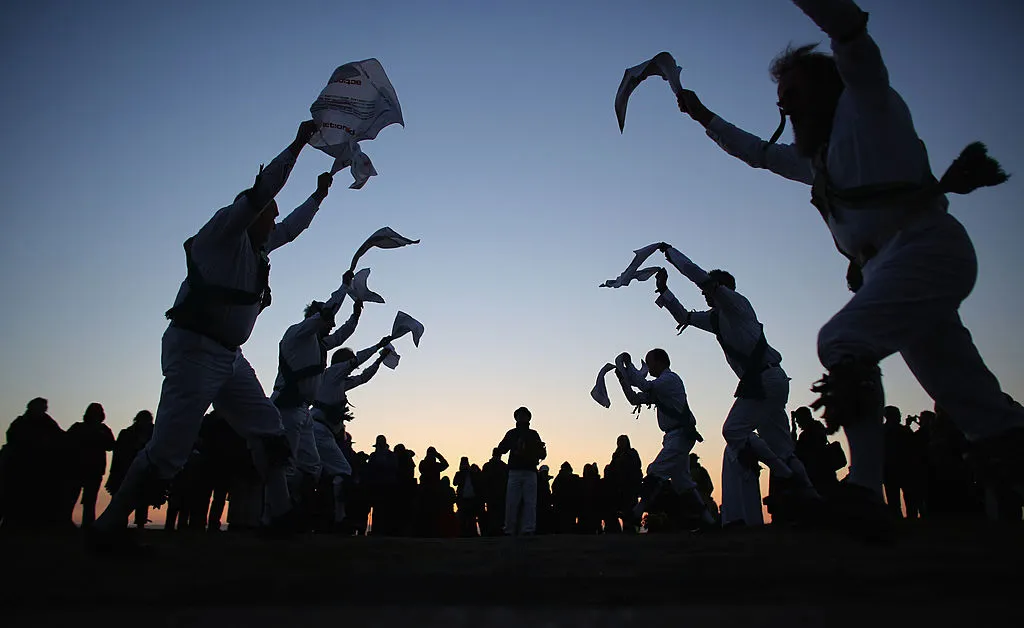
Despite often being the butt of jokes, Morris dancers are in high demand on May Day, performing at pubs and on village greens up and down the country. Many Morris dancers dance in the dawn, including the Wessex Morris Men who climb above the Cerne Abbas Giant at 5.15am and the Men of Wight who circle the megalithic Longstone at Mottistone as the sun comes up. Morris dancing dates back at least 600 years although it is unclear where the dance style came from, or what it represents. The majority of groups that exist today were formed after the 1930s, basing their dancing style on information collected by folklorists, although some groups, including those at Abingdon and Chipping Campden, can trace their routes back to the 1800s.
Dressing up in strange costumes appears to be a running theme when it comes to celebrating May Day, and nothing beats the attire of Jack in the Green, who wears a foliage-covered frame work in May Day parades. It is widely believed that the Jack represents the Green Man, a symbol of fertility, but Jacks have also sometimes adopted the cheeky character of Puck.
Although many May Day celebrations date back centuries, they vary from place to place. We’ve rounded up a few examples of classic May Day celebrations that take place this weekend.
Best traditional May Day events 2023
The May Day celebrations have altered from their ancient folk roots, differentiating in each of the communities, which still embrace the traditions. Local events such as Maypole dances and country fairs are commonplace for May Day Bank Holiday and make for a great family day out.
The Clun Green Man Festival, Shropshire
Sunday 30 April – Monday 1 May
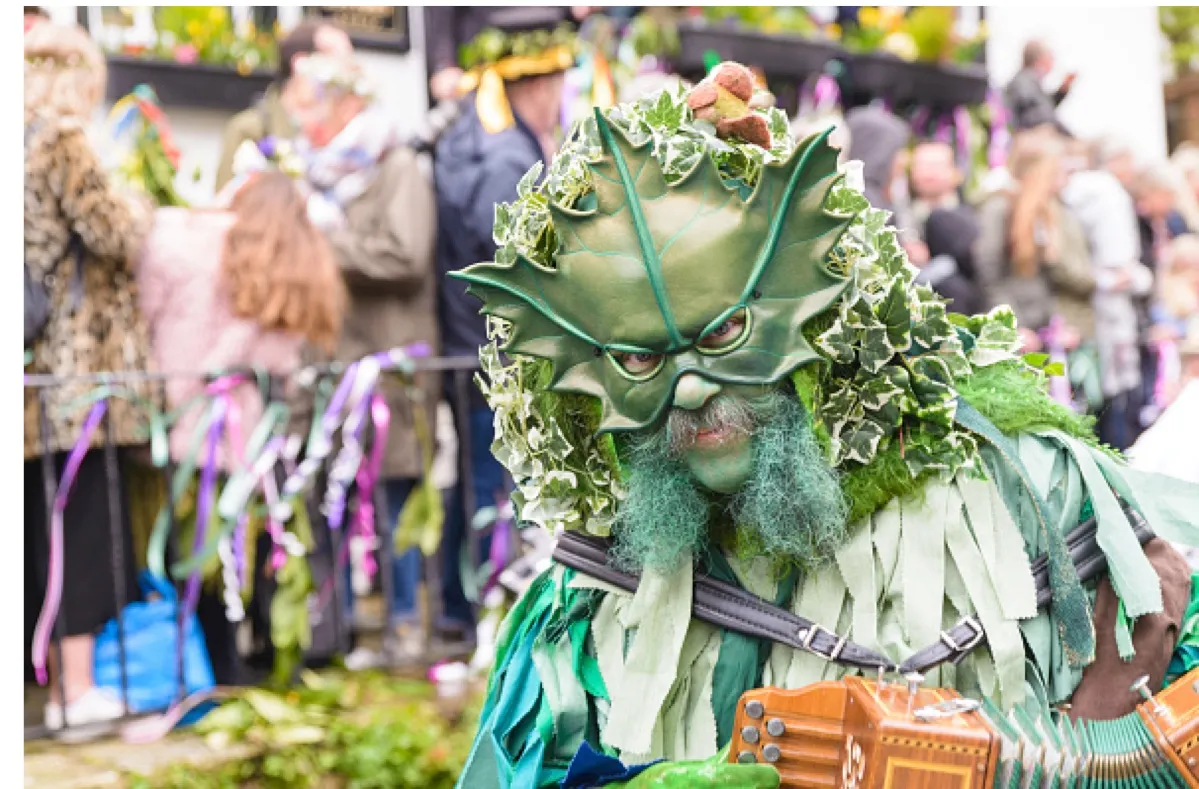
Crowds will gather on Clun Bridge in Shropshire to witness the Green Man defeat the Frost Queen to ensure there is a summer in the valley. The leafy face of the Green Man represents nature, fertility, and the cycle of death and rebirth. After his victory the Green Man will lead a garland-festooned parade to the grounds of Clun Castle. Expect music, crafts, magic shows, maypoles and, of course, Morris.
Beltane Fire Festival, Edinburgh
Saturday 30 April – Monday 1 May
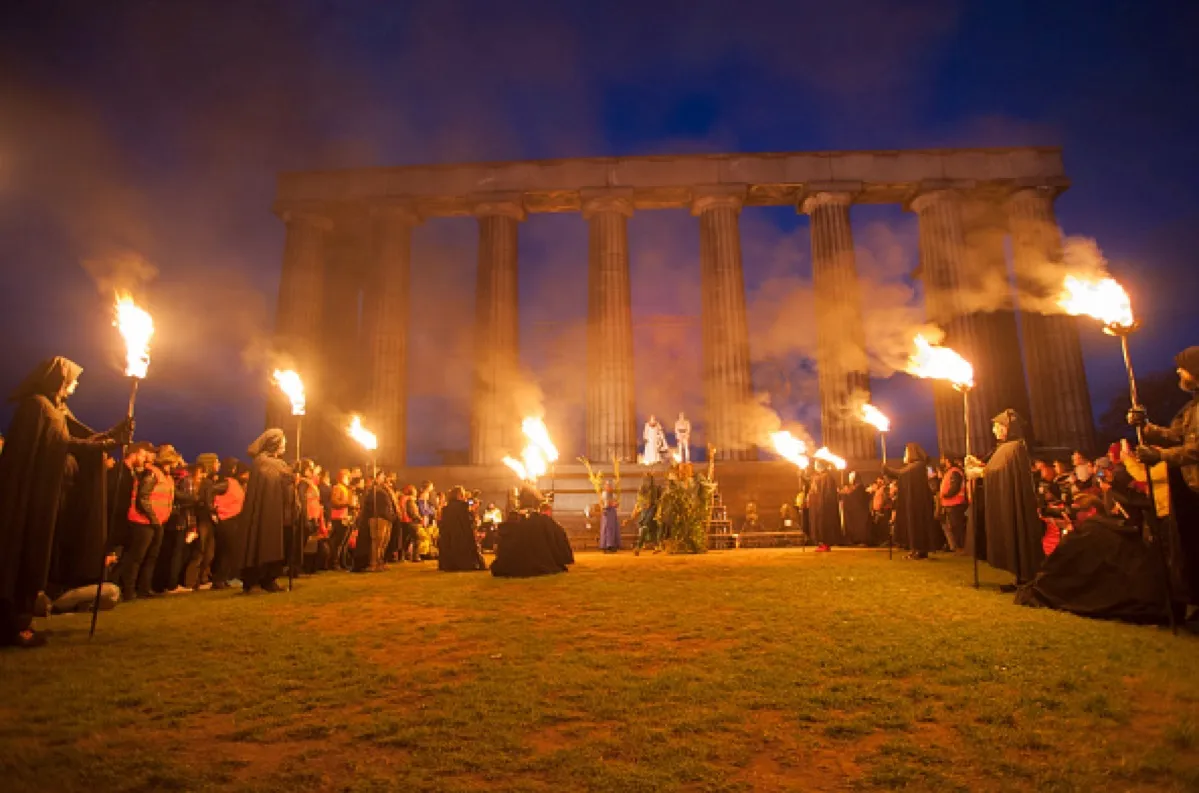
The Scottish Beltane Fire Festival is a revitalised celebration of Celtic culture: the fire believed to cleanse, purify and increase fertility of all the festival participants. Get ready for some seriously exciting drumming, fire displays, acrobatics, body paint, some nudity and hordes of otherworldly creatures including Beastie Drummers and Red Men exhibiting 'uninhibited behaviour'.
On the evening of 30 April, join several thousand people and congregate at Calton Hill in the centre of Edinburgh. Beltane Fire Festival will involve around three hundred voluntary performers, marking the end of the Scottish winter and welcoming the summer season ahead with optimism.
edinburghguide.com/events/beltane-fire-festival
Jack-in-the-Green Festival, Hastings
Fri 28 April – Monday 1 May
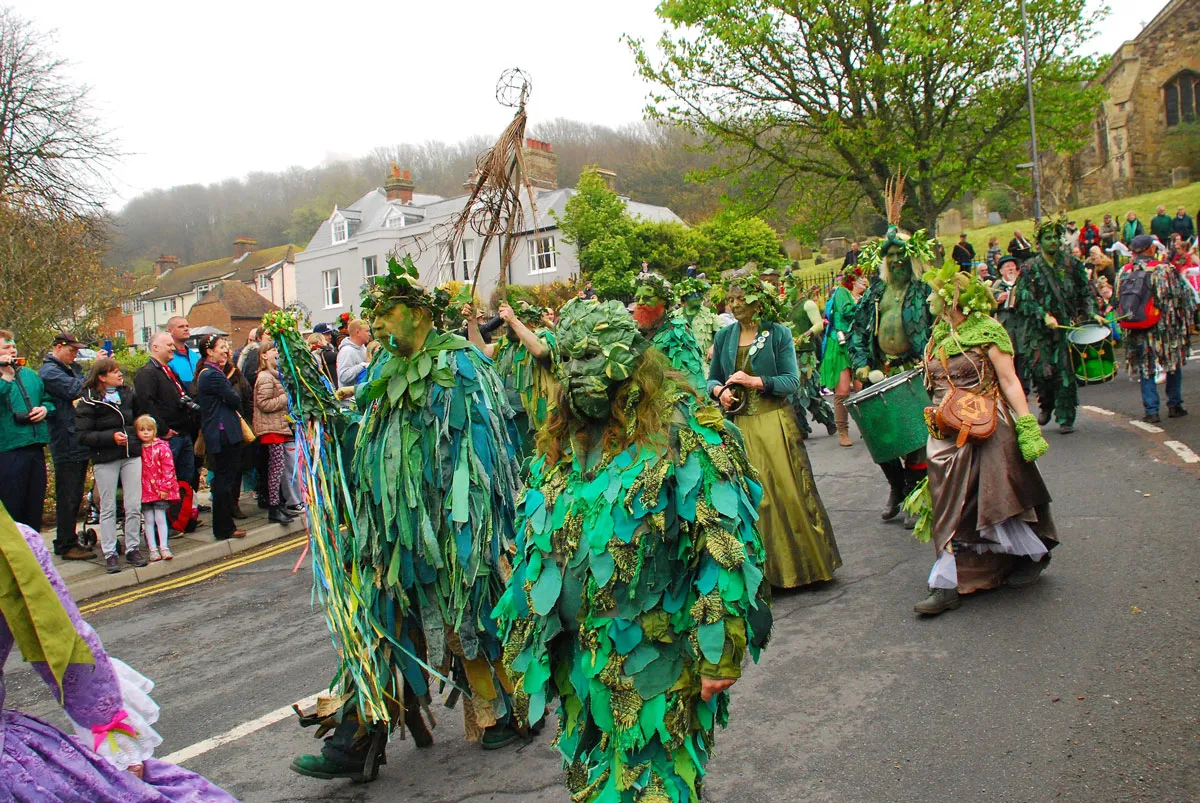
Dressing up in strange costumes appears to be a running theme when it comes to celebrating May Day, and nothing beats the attire of Jack in the Green, who wears a foliage-covered frame work in May Day parades. It is widely believed that the Jack represents the Green Man, a symbol of fertility, but Jacks have also sometimes adopted the cheeky character of Puck.
Hastings celebrates the start of summer with an annual Jack-in-the-Green festival. Look out for the procession following The Release of the Jack, culminating in The Slaying of the Jack, representing the release of the Spirit of Summer. There will be Morris dancing and real ale. Prepare to have your face dabbed with green paint by random dancing characters if you haven't already got some on there.
hastingstraditionaljackinthegreen.co.uk
Jack in the Green, Rochester Sweeps Festival, Kent
Friday 29 April – Monday 1 May
Rochester's annual folk celebration 'The Sweeps' might be the largest gathering of Morris 'sides' in the world. For three days, every pub will have a band playing throughout the day, every street will be filled with Morris dancers clacking sticks, and every park will be full of people. The atmosphere here is hard to beat.
The hardcore can attend the crack-of-dawn Jack in the Green awakening ceremony at 5am on Bluebell Hill picnic area, where Morris dancers and sweeps bring Jack back to life. Or you can wait until Monday and watch the procession from Star Hill at 2.45pm.
visitmedway.org/events/rochester-sweeps-festival-2023-79679/
Obby Osses Day, Padstow
Sunday 29 April – Monday 1 May
Padstow comes alive with the sound of music and merriment every May. On 29 April, locals will decorate the town with coloured flags, flowers and greenery and put up the maypole, ready for the release on the 1 May of the two hobby horses ('osses) – one red, one blue – which emerge from their stables.
Each one consists of a 6ft-wide wooden hoop draped in black sail cloth and hoisted onto a fearsome, masked local chap. They prance through the town followed by a troupe of musicians, singers, drummers and dancers.
In 2019, safety arrangements at the festival came under scrutiny after a paediatric nurse sustained an injury from one of the 'osses, and died shortly afterwards. Coroners are yet to establish whether the knock caused her death.
cornwalls.co.uk/events/obby_oss.htm
Riding of the Bounds, Berwick-Upon-Tweed
Sunday 29 April
Berwick's bounds date back to 1438 when representatives from England and Scotland agreed where one country would end and where the other would begin. The tradition of patrolling the bounds on horseback to protect against the Scots dates back as far as 1542. Watch the 150 horsemen and women parade through the town from the Barracks to the Guildhall before beginning their ride to continue this tradition.
berwickridersassociation.co.uk/
Helston Flora and Furry Dance, Cornwall
Monday 8 May
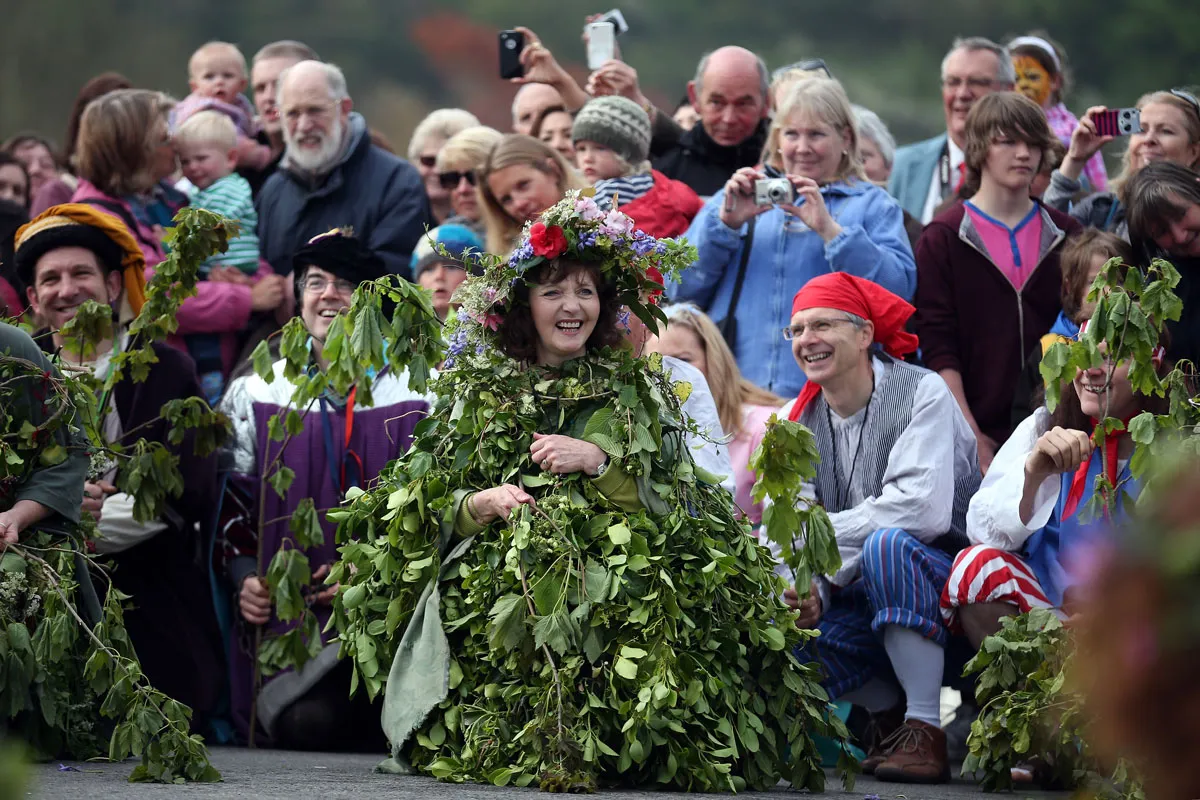
Every May, thousands of people take to the streets of Helston for a Cornish festival that's "bigger than Christmas": the Helston Flora Day. It's in the spirit of Beltane, celebrating springtime, renewal and fertility. Houses and shops are decorated with greenery and an abundance of beautiful flower displays. At 7am, the bass drum sounds and couples begin to dance down the street, entering selected houses and and shops to drive out winter's darkness and welcome in the spring.
This is followed by the seasonal folk play, Hal-an-Tow, a hodgepodge of storylines including the fight against the Spanish Armada, St George and the dragon, and the fight between St Michael and the devil. You can see it staged at several venues throughout the town.
Read our feature on the Helston Floral Day
The Hunting of the Earl of Rone, Combe Martin, Devon
Friday 26 May – Monday 29 May
Possibly one of the strangest things to happen in Britain, this event is based on a fictional chapter of ‘history’ (although thought to be based on the Irish Earl of Tyrone). A fool and a hobby horse, accompanied by grenadiers, search the village for the Earl of Tyrone. He is finally captured, mounted on a donkey and paraded through the village, repeatedly shot and revived, shot one last time, taken to the beach and thrown in the sea. Because you can never be too careful.
Castleton Garland day, Peak District
Sunday 29 May
Elements of beating the bounds, Oak Apple Day (a commemoration of the restoration of Charles II in 1660) and traditional spring festival all appear to collide in this colourful ceremony, usually held on 29 May. A beehive shaped head-dress, covered with wildflowers and greenery, is worn over the head and shoulders of the Garland King, who is dressed in Stuart costume. There is a parade and dancing, accompanied by girls from the village school. The Garland, now separated from its wearer, is hoisted up the church tower and impaled on the pinnacle. Maypole dancing rounds off the big day.